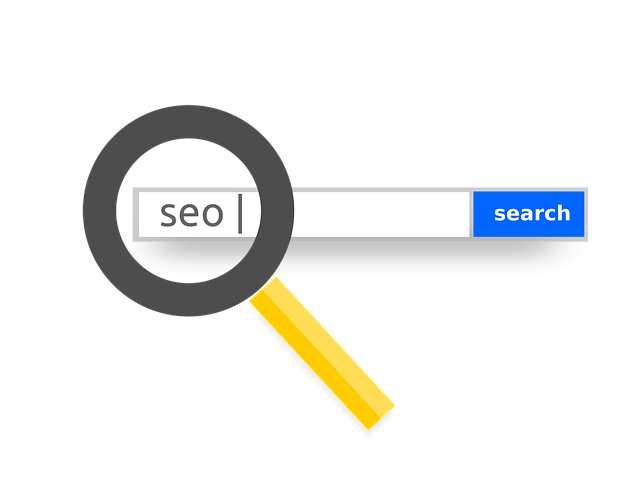— August 10, 2017

Nikin / Pixabay
Inbound marketing professionals come from a host of different disciplines and specialties.
Some of us are writers who have honed our talents for writing intriguing and engaging blog and website content. Others are marketing strategists who have embraced the reality of today’s powerful inbound methodology to attract prospects, generate leads, and convert customers in a non-interruptive way. Still others are designers, coders, and other technical wizards who have focused their magic fingertips on creating incredible user experiences and fully optimizing the content creation, distribution, and consumption journey.
Despite all these different perspectives, however, all of us need to be concerned about some of the basic principles, tools, and strategies that make inbound marketing tick. And one of those key elements is on-page SEO.
What is on-page SEO?
To keep things clear, let’s define on-page SEO and differentiate it from its second-cousin, off-page SEO.
On-page SEO refers to all the visible (within the content) and invisible (in the coding) elements that optimize a given piece of published content for indexing and ranking by search engines like Google and Bing. We’ll break down the specifics below, but it’s important to realize that on-page SEO is only half the equation when it comes to setting up a piece of content for maximum performance in the SERPs.
Off-page SEO, on the other hand, involves all the various ways you can distribute that content and build incoming links so as to increase the content’s authority in the eyes of the search engines.
While there are numerous strategies and tactics you can use to optimize both ends of the spectrum, content creators and other inbound marketing pros have more direct control over on-page SEO than off-page. So, while every inbound marketing agency and SEO agency is likely to offer comprehensive on-page SEO services, quality off-page work is a more specialized niche.
What do you need to know about on-page SEO to succeed?
Without getting into the deep nitty-gritty of specific best practices and tactics, there are a few overarching principles that every marketer needs to understand regarding on-page SEO:
- It’s constantly changing – Google and Bing are constantly updating their algorithms, and as a result, the minutia of on-page SEO best practices necessarily change with them. An entire niche industry has been built around keeping up with and applying these changes, so we’ll just recommend subscribing to some of the key thought leaders in that space, like Moz, SearchEngineLand, Search Engine Journal, and Neil Patel.
- Great content still wins – Although there are plenty of technical details you can and should address to tweak your content for the search engines, never forget that optimizing junk content is like the proverbial lipstick on a pig. No matter how high a crappy article appears in search results, it’s not going to accomplish its purpose, and it can do a lot of damage to the reputation of the site hosting it.
- Think topics, not “keywords” – Although “keywords” are technically still a thing, modern SEO is much more about building authoritative content around broad topics and topic clusters rather than focusing on dominating one or more specific keyword. That’s because Google and Bing are both smart enough to figure out what searchers are looking for even if they spell it wrong, mix up their words, use synonyms, related terms, or other versions that aren’t technically the exact keyword or keyphrase you assumed they’d be using when you created your content.
- You’re answering questions, not discussing keywords – The whole reason behind the algorithm updates, AI, machine learning, and other wizardry the search engines employ is their desire to effectively answer the questions searchers are asking. That should be the goal of your content as well. You’re not crafting a blog post to rank highly for the keyword “replacement vacuum cleaner bag,” you’re publishing the post to answer the question, “how do I replace the bag in my Hoover 3000-M vacuum cleaner?”
- People first, machines second – Finally, whether you’re creating the content from scratch or optimizing a polished draft for publication, always be sure the content is crafted to appeal to human beings first — preferably, a specific target persona — not some borderline-sentient server at one of Google’s data farms.
What are the key elements of on-page SEO?
This is a deep and rich subject, and encompasses far more than we can effectively cover in this blog post. But, to give you an idea of just how much on-page SEO encompasses, here’s an exhaustive list of all the items we have on our SEO checklist:
- Title Tag
- Description Tag
- URL
- H1 (Headings)
- H2-H5 (Subheadings)
- Topic (or, keyword, if you must) placement
- Site structure
- Social sharing buttons
- Mobile friendly (including AMP and responsive design)
- Outbound links
- Internal links
- Site speed
- Image ALT tags
- Image Title tags
- 301 redirects
- XML Sitemap
- Robots.txt
- Schema Markup
- Canonical URLs
If this seems like a lot, that’s because it is. And remember, on-page SEO is only half of the equation when it comes to getting the most mileage out of every piece of content you produce.
Digital & Social Articles on Business 2 Community
(63)





